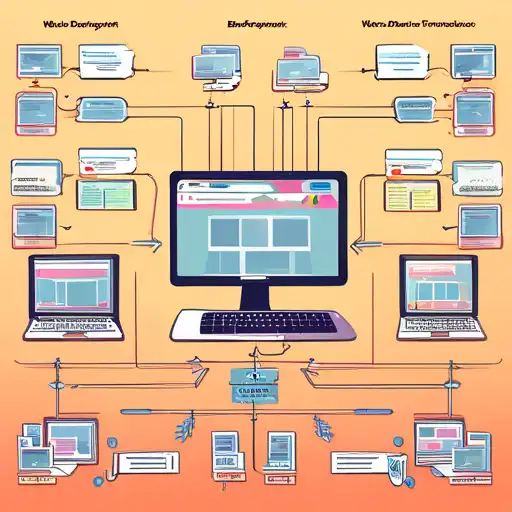Understanding Web Development Frameworks
In the ever-evolving world of web development, choosing the right framework is crucial for building efficient, scalable, and maintainable websites and applications. With a plethora of options available, developers often find themselves at a crossroads, trying to determine which framework best suits their project needs.
What Are Web Development Frameworks?
Web development frameworks are software libraries designed to support the development of web applications by providing a standard way to build and deploy them. They offer a foundation upon which developers can build, saving time and effort by eliminating the need to write code from scratch for common functionalities.
Types of Web Development Frameworks
Web development frameworks can be broadly categorized into two types:
- Frontend Frameworks: These are used for the client side of web applications, focusing on the user interface and user experience. Examples include React, Angular, and Vue.js.
- Backend Frameworks: These are used for the server side of web applications, handling database operations, user authentication, and server logic. Examples include Django, Ruby on Rails, and Express.js.
Factors to Consider When Choosing a Framework
Selecting the right web development framework depends on several factors, including:
- Project Requirements: The nature and requirements of your project play a pivotal role in determining the most suitable framework.
- Learning Curve: Some frameworks are more beginner-friendly than others. Consider the team's expertise and the time available for learning.
- Community and Support: A strong community and good documentation can significantly ease the development process.
- Performance: Evaluate the performance benchmarks of the framework to ensure it meets your application's needs.
Popular Web Development Frameworks in 2023
Here are some of the most popular web development frameworks that have gained traction among developers:
- React: A JavaScript library for building user interfaces, known for its virtual DOM feature.
- Angular: A platform and framework for building single-page client applications using HTML and TypeScript.
- Vue.js: A progressive framework for building user interfaces, designed to be incrementally adoptable.
- Django: A high-level Python web framework that encourages rapid development and clean, pragmatic design.
Conclusion
Choosing the right web development framework is a critical decision that can influence the success of your project. By considering the factors mentioned above and evaluating the strengths and weaknesses of each framework, you can make an informed choice that aligns with your project goals and team capabilities. Remember, the best framework is the one that fits your specific needs and helps you achieve your objectives efficiently.
For more insights into web development and choosing the right tools for your projects, explore our technology section.
